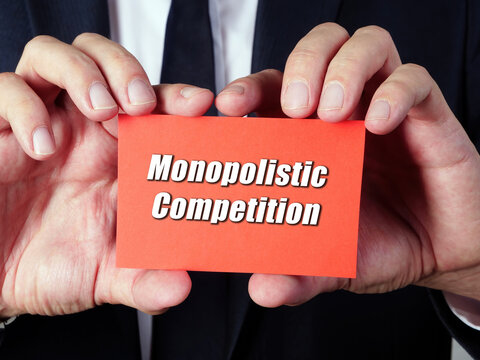
Have you ever wondered why your favorite coffee shop, despite having numerous competitors, always seems to have its unique charm and a loyal customer base? This is the intriguing world of monopolistic competition – a market structure that shapes our daily choices without us even realizing it.
Monopolistic competition is an economic model where numerous producers sell products that are differentiated from one another as good substitutes but are not perfect substitutes. This market structure falls between perfect competition and monopoly, embodying elements of both.
In today’s rapidly evolving and diverse marketplace, grasping the concept of monopolistic competition is crucial. It’s not just a theory tucked away in economics textbooks – it’s a vibrant, living force that impacts everything from your morning latte to the latest fashion trends. Understanding how this competition works provides invaluable insights into business strategies, consumer behavior, and market dynamics.
What is Monopolistic Competition in Economics?
- At its core, monopolistic competition is about differentiation. Unlike in perfect competition, where products are identical, here each firm offers a product that has something unique about it.
- This uniqueness could stem from branding, quality, design, location, or even customer service. It’s this differentiation that gives each firm some degree of market power – the power to set prices without losing all customers.
Comparing Market Structures:
- Imagine a spectrum: on one end is perfect competition, characterized by many firms selling identical products, and on the other end is a monopoly, with only one firm dominating the market. Monopolistic competition sits comfortably in the middle.
- Unlike in a monopoly, barriers to entry in monopolistic competition are lower, allowing new firms to enter the market easily. However, unlike in perfect competition, firms don’t just compete on price; they also compete on product features, brand image, and overall customer experience.
- In this market, no single firm has complete dominance, and each tries to make its product stand out in a crowded market. This is where the concept of “Monopolistic competition” becomes central to understanding how these markets function.
Monopolistic Competition vs Perfect Competition
Contrasting the Two Market Structures:
- Market Structure and Product Nature:
- Perfect Competition: Characterized by many sellers offering similar goods produced using a standard method. It represents a theoretical market situation with peak competition where firms are price takers, and products are identical.
- Monopolistic Competition: Involves numerous sellers offering similar but not identical products, making it a more realistic market structure. It combines features of both monopoly and perfect competition, with firms being price makers and product differentiation being a key characteristic.
- Product Differentiation:
- In monopolistic competition, products are differentiated on various bases such as quality, brand, or customer service. This differentiation provides each firm with some degree of market power, unlike in perfect competition where the homogeneity of products leaves no room for such an advantage.
- Market Power and Pricing:
- Perfect Competition: Here, prices are determined by the forces of demand and supply for the entire industry, and firms must accept the market price.
- Monopolistic Competition: Firms have the autonomy to set their prices based on product differentiation. This allows for some degree of pricing power, although it is limited compared to a monopoly.
Real-world Examples of Monopolistic Competition
- Coffee Shops and Chains:
- The global coffee industry, with brands like Starbucks and Costa Coffee, exemplifies monopolistic competition. Despite selling the core product – coffee – each brand differentiates itself through quality, customer service, pricing, and ambiance. This differentiation allows them to compete on non-price factors, such as brand image and customer experience.
- Non-Price Competition and Pricing Power:
- Firms in monopolistic competition engage significantly in non-price competition. For example, a street vendor might offer coffee at a much lower price compared to Starbucks, but Starbucks differentiates itself with higher quality, better hospitality, and ambiance, thereby justifying higher prices.
- Barriers to Entry and Exit:
- Monopolistic competitive markets like the coffee industry have relatively low barriers to entry and exit, allowing new players to enter the market with innovative products or services.
Product Differentiation in Monopolistic Competition
- Nature and Strategies of Differentiation:
- Product differentiation in monopolistic competition aims to make a firm’s product appear unique or superior to competitors. This differentiation can be achieved not just through changes in the actual product but also through marketing strategies like advertising campaigns or packaging.
- Horizontal and Vertical Differentiation:
- Differentiation can be categorized into horizontal (based on subjective preferences like colors or flavors) and vertical (based on measurable factors like technological differences). This distinction helps firms create a niche for themselves and compete effectively without solely relying on pricing.
- Creating Competitive Advantage:
- Through differentiation, firms in monopolistic competition create a scenario where they can act as a monopoly to some extent, gaining price-making power. However, due to the presence of close substitutes and high cross elasticity, this market structure also retains elements of perfect competition.
